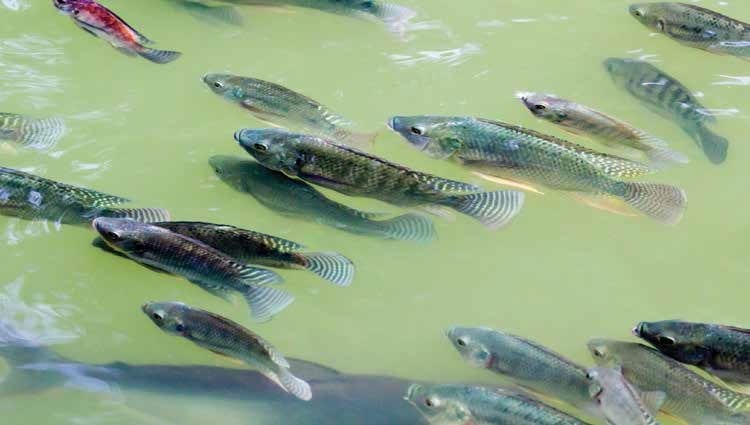Fish farms in China save costs with sustainable technology developed by the checkoff, increasing U.S. soy demand.
The soy checkoff has not only been working to keep sustainability strong in the United States, it also has been doing so across the globe, sharing sustainability practices with other countries – along with the benefits of U.S. soy.
Songjiang Lutang Farm is one of numerous examples of farms around the world becoming more sustainable through U.S. soy – it’s a complete cycle of sustainability.
The farm uses a system that the soy checkoff helped develop, called Intensive Pond Aquaculture (IPA), to increase production while also reducing energy use and production costs. The system, which was introduced to the facility by the U.S. Soybean Export Council (USSEC), also captures waste from ponds to be used as fertilizer in neighboring fields. This is a technology that USSEC has introduced to multiple farms in China.
This technology has the potential to increase demand for soy in fish feed at aquaculture facilities in China, as the more fish these facilities can house, the more feed they need.
“It’s very beneficial for us to be able to cooperate with USSEC and the U.S. soybean industry,” says Zhang Guoqi, deputy director of Songjiang Lutang Farm, through a translator. “We have learned a lot of new technology from them, such as the IPA, which increases yield tremendously. For example, for the amount of fish we have, we use 10 hectares (24 acres) of water space with IPA. It would take 30 hectares (74 acres) without it, so this technology helps us save on labor, energy and water and provides more economical returns.”
Songjiang Lutang Farm sees many benefits of U.S. soybean meal and currently uses feed rations that contain 60 percent soy. Replacing wild-caught fish, the traditional protein source for aqua feed, with soy is also considered a sustainable practice since soy is a more renewable resource. It could net a big profit for U.S. soybean farmers.
